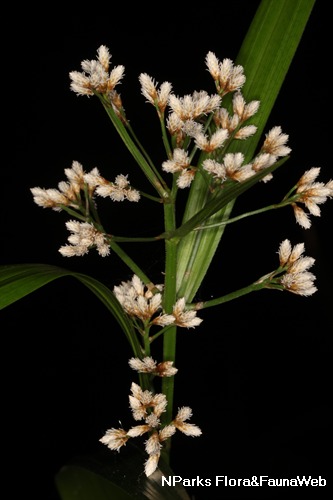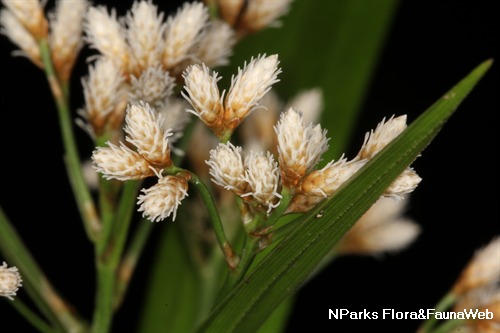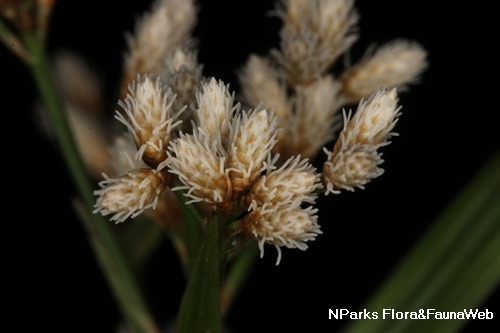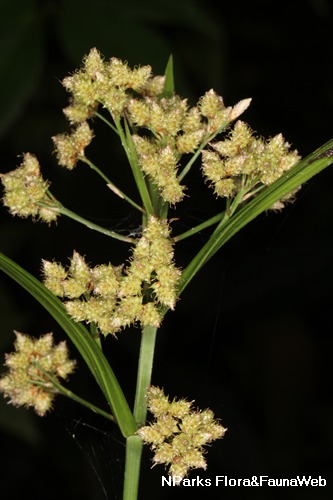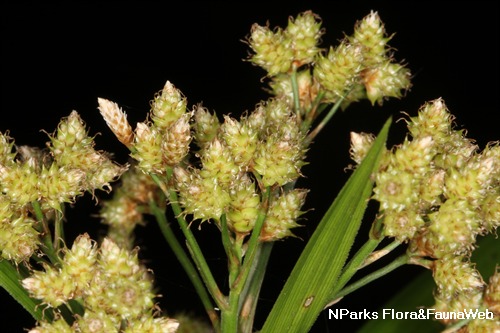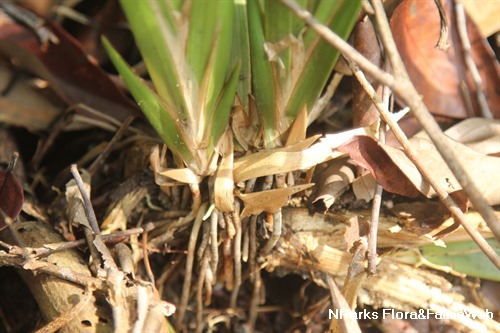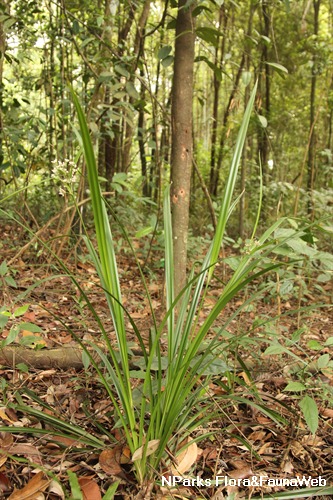
Name
Classifications and Characteristics
| Plant Division | Angiosperms (Flowering Seed Plants) |
|---|---|
| Plant Growth Form | Grass or Grass-like Plant (Sedge (Cyperaceae)) |
| Lifespan (in Singapore) | Perennial |
| Mode of Nutrition | Autotrophic |
Biogeography
| Native Distribution | From tropical Africa, Sri Lanka, Indian Ocean islands, to China, Taiwan, Bhutan, south throughout Southeast Asia to tropical Australia, and the Pacific Islands. |
|---|---|
| Native Habitat | Terrestrial |
| Preferred Climate Zone | Tropical |
| Local Conservation Status | Native to Singapore (Least Concern (LC)) |
Description and Ethnobotany
| Growth Form | It is a perennial, rhizomatous herb, 30-90 cm tall. |
|---|---|
| Roots | Its roots are hard and fibrous. |
| Foliage | Its stiff, long, strap-like leaves are 35-120 cm long and 0.8-2.6 cm wide. The leaves are held in 3-angled culms, with a brownish basal leaf sheath, 5-15 cm long. |
| Stems | Its rhizomes are short, and woody, covered densely with reddish scales. |
| Flowers | Its tiny male and female flowers are arranged in an inflorescence, 3-7 mm long and 3-6 mm wide. |
| Fruit | Its fruits are dark grey-brown nutlets that are 2-2.5 mm long. |
| Habitat | It grows in wet areas of forests. It is found locally in Central Catchment Nature Reserve. |
| Cultivation | It can be propagated by seed or division of the culms. |
| Etymology | The genus Hypolytrum is Latin for gore-beneath, referring to the colouration of the leaf sheaths. The specific epithet nemorum is Latin for of the woods, referring to the habitat it grows in. The varietal epithet proliferum is Latin for offspring-bearing. |
Landscaping Features
| Landscaping | It is suitable for paritally-shaded areas in parks and gardens. |
|---|---|
| Desirable Plant Features | Ornamental Form |
| Landscape Uses | Parks & Gardens, Small Gardens, Riverine |
Fauna, Pollination and Dispersal
| Pollination Method(s) | Abiotic |
|---|
Plant Care and Propagation
| Light Preference | Semi-Shade |
|---|---|
| Water Preference | Moderate Water |
| Plant Growth Rate | Moderate |
| Rootzone Tolerance | Moist Soils, Well-Drained Soils, Fertile Loamy Soils |
| Propagation Method | Seed, Division |
Foliar
| Foliage Retention | Evergreen |
|---|---|
| Mature Foliage Colour(s) | Green |
| Mature Foliage Texture(s) | Leathery |
| Foliar Type | Simple / Unifoliate |
| Foliar Arrangement Along Stem | Rosulate / Rosette |
| Foliar Attachment to Stem | Sessile |
| Foliar Shape(s) | Non-Palm Foliage (Linear) |
| Foliar Venation | Parallel |
| Foliar Margin | Entire |
Floral (Angiosperm)
| Flower & Plant Sexuality | Unisexual Flowers , Monoecious |
| Flower Grouping | Cluster / Inflorescence |
|---|
| Flower Location | Terminal |
| Inflorescence Type | Spikelet / Pseudospikelet / Compound Spike |
Fruit, Seed and Spore
| Mature Fruit Colour(s) | Brown |
|---|---|
| Fruit Classification | Simple Fruit |
| Fruit Type | Indehiscent Dry Fruit , Nut / Nutlet |
Image Repository
Others
| Master ID | 32084 |
|---|---|
| Species ID | 6490 |
| Flora Disclaimer | The information in this website has been compiled from reliable sources, such as reference works on medicinal plants. It is not a substitute for medical advice or treatment and NParks does not purport to provide any medical advice. Readers should always consult his/her physician before using or consuming a plant for medicinal purposes. |

